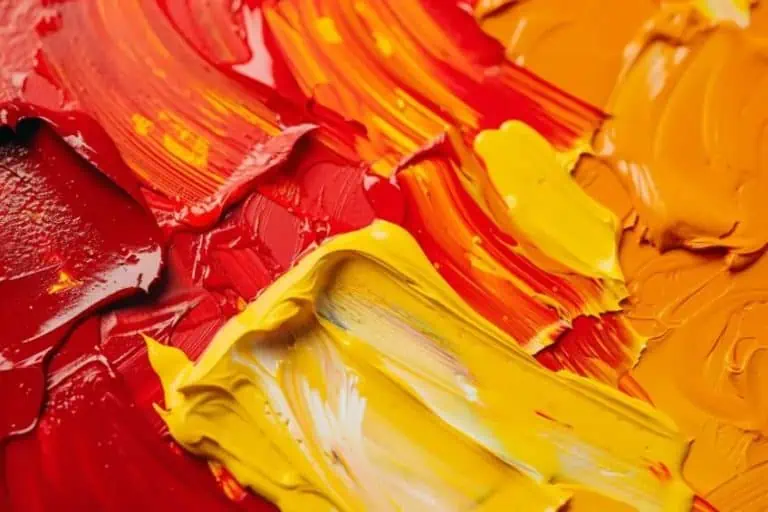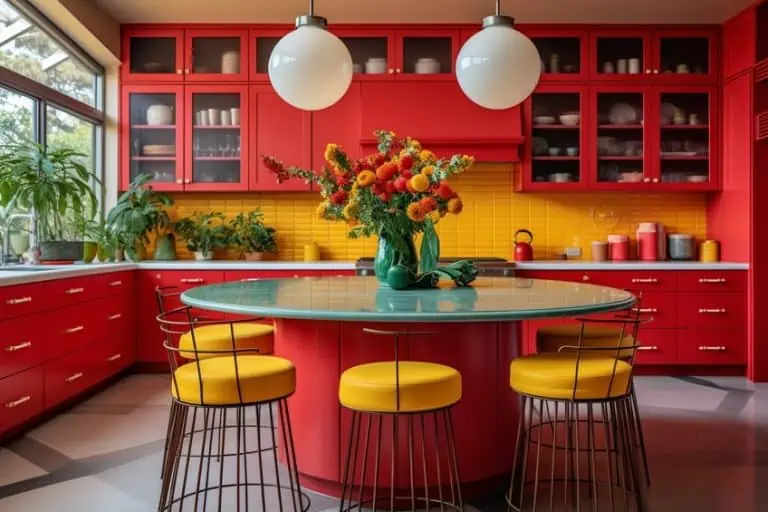What Colors Make Turquoise – In-Depth Turquoise Mixing Guide
This post may contain affiliate links. We may earn a small commission from purchases made through them, at no additional cost to you.
Is turquoise blue-green or is it green-blue? Is turquoise the same as teal or aqua? Ultimately, turquoise is a wide range of colors and shades. The color is appealing and is affiliated with feelings of calmness and positivity. The color is also closely associated with calm ocean scenes and nature. Turquoise can also produce a wonderfully serene, yet confident feeling. Following is a more detailed description of what colors make turquoise and the different popular shades of turquoise you can use in all of your art projects.
Table of Contents
A Brief History of Turquoise
The first thing you think about when the word turquoise is mentioned is most probably the gem that has the same name. The word itself goes back to the seventeenth century, is French, and means “Turkish”. The mineral was obtained from mines in Persia (Iran) and Afghanistan and was transported through Turkey on its way to Europe. Before this time, turquoise was also mined in areas of Ancient Egypt. There have even been prehistoric turquoise artifacts discovered in Bulgaria, which means the mineral has been valued for many years. The name turquoise, associated with its color, was documented in the early 1500s and is regarded as a shade of cyan.
The mineral itself is a blue-green gem and has been sought after for its attractive color. Over the ages, turquoise jewelry has been worn by the affluent, which was evidence of prosperity and wealth, and was a display of style.

Turquoise has an exotic undertone and lends itself to a certain amount of mystery. Turquoise was also discovered and mined in the American regions of Arizona as well as in New Mexico. In these areas, the amazing color became a symbol of protection. The Aztecs incorporated turquoise into certain objects, and the Apache nation carried a piece of turquoise with them to ensure perfect aim when using their bow and arrow.
Due to its history, many still see turquoise as a symbol of hope, protection, calmness, and balance. Turquoise is the birthstone for December, and many see the color as a mark of success. Real turquoise gem jewelry is quite popular; however, it can be rather expensive. When it comes to creating shades of turquoise for art projects, anybody with some knowledge of color theory should be able to create the color they want. Let us now discover what colors make turquoise.
What Two Colors Make Turquoise?
Turquoise is a color that can encourage creativity and can add an attractive brightness to art projects. To make turquoise paint, mix blue and green. However, is creating turquoise that simple? Getting just the right color turquoise might be a bit more challenging, and you will need to add different ratios of colors to get the best shades of turquoise. You can find turquoise somewhere in the middle of green and blue when looking at the color wheel. So, if you know what to do, you can create a shade of turquoise that leans towards green or blue. We also have an online color mixer app, where you can try all sorts of turquoise color mixes.
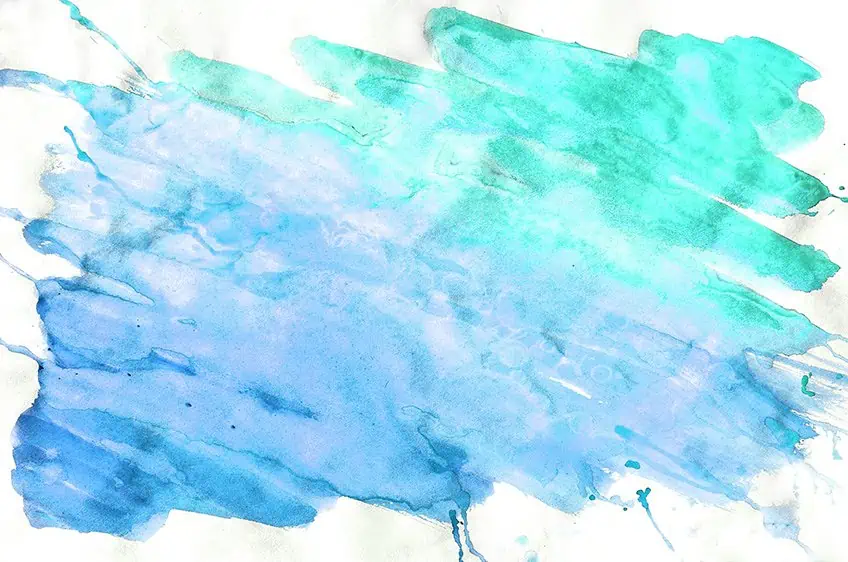
When creating a turquoise color palette, you should experiment and play around with different amounts of green and blue. To achieve the various shades of turquoise, you need an understanding of color theory. Above, we mentioned the color wheel, which is a visual depiction of the primary, secondary, tertiary colors and their various shades, tones, and hues in-between. This will play an important role when mixing colors.
Understanding Color Temperature
Colors can be associated with either being warmer or cooler or having a color bias. Red, yellow, as well as orange, are clearly on the warm side, while green and blues are cooler colors. However, you can also get warmer blue colors and cooler reds. The same applies to turquoise, since it is made from a mix of green and blue, it can also have a color bias.
Since green is created by blending blue and yellow, by adjusting the color ratios, you can create a green that is either warmer or cooler. For example, lime is considered a warmer green as it contains more yellow. You also get warmer blues that have more of a purple bias than a green one, while cool blues will have a green bias. As you can see, there is a lot more to creating the perfect turquoise than a mix of blue and green. The colors you are starting with must be correct to get the desired turquoise color.
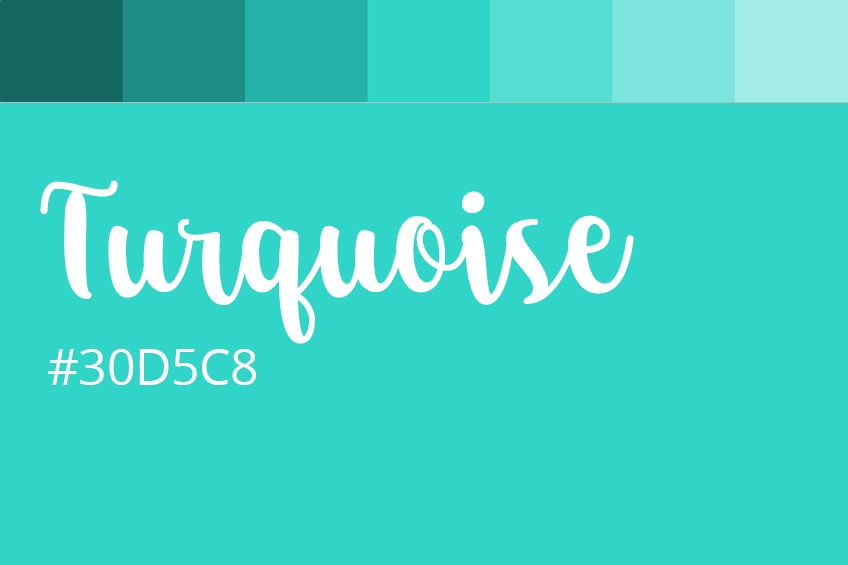
Tints and Shades of Turquoise
Not only can you affect the temperature of a color, but you can also make it brighter, muted, or create darker colors. A brighter and richer turquoise can be made by adding a little more yellow to the mix. White can also be mixed in to make the color brighter, however, white will also create a more opaque or muted color.
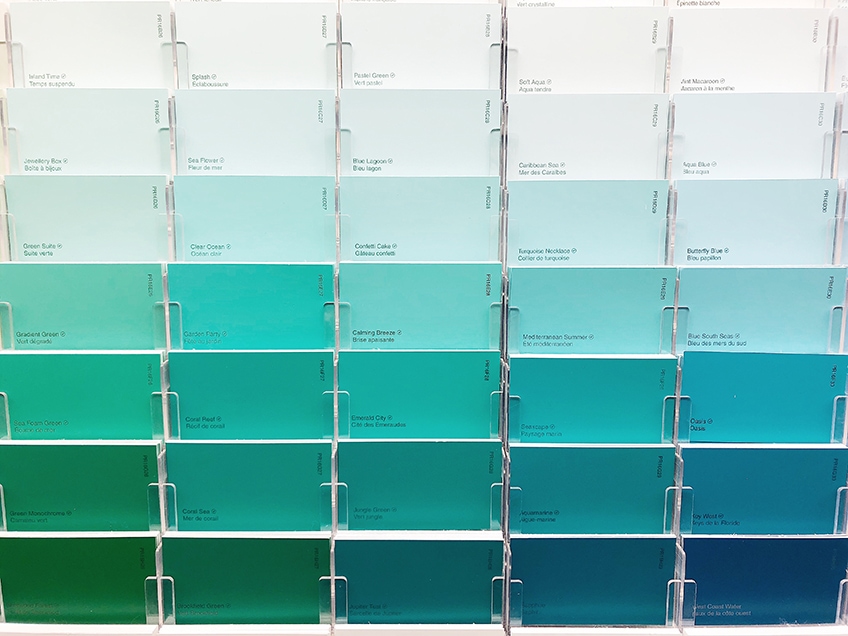
The above is what you call tints, while shades of turquoise are when darker colors, like black, are added to the mix. The amount of white and black you add will determine the tint or shade of color. When adding these colors to paint, the trick is to mix in small amounts as you go. Black can also be extremely severe and adding too much can ruin the color you wanted to achieve. A better option to consider is to use a deep blue or navy color to darken your turquoise. You may even want to try a little purple, for a more distinctive turquoise color. These colors also produce a more vivid turquoise than adding black. Experiment with all the options to test them out, so you can find the color you want.
Complementary Turquoise Colors
Going back to the color wheel, all colors are arranged in a circle or wheel shape, and when consulting the wheel, you can then determine what colors are complementary or analogous. Complimentary colors are positioned opposite each other. For example, blue and orange. So, for turquoise and its various shades, the complementary colors will be your shades of yellow, oranges, and reds. A richer golden color might be your best choice for turquoise.
When these colors are placed near each other, the colors are intensified. However, if you blend complementary colors, you will get a muddy brown. Lighter turquoise colors also go well with neutral colors such as gray, white, or tan and other shades of brown. Analogous colors are colors that sit on the same side of the color wheel, and these colors will blend well. So, turquoise will blend well with your various greens and blues.

Popular Shades of Turquoise
Sometimes, describing and naming colors can be subjective. For example, is beige a standard color? In many cases, many would define this color as a light brown. In the case of turquoise, are teal and aqua standard colors, or are they shades of turquoise? Teal might be considered a darker shade of turquoise, while aqua is more of a blue, with a dash of green to it. Of course, the color wheel is there to help you determine colors.
However, tools are available that everyone can use when it comes to computer graphics and printing. A hex code is there to help you find a certain color and represents color as the amount of red, green, and blue present, mainly referred to as RGB. Printing involves a mixture of four colors, namely cyan, magenta, yellow, and black, or CMYK. Following are a few favorite shades of turquoise and a table displaying these codes and percentages.
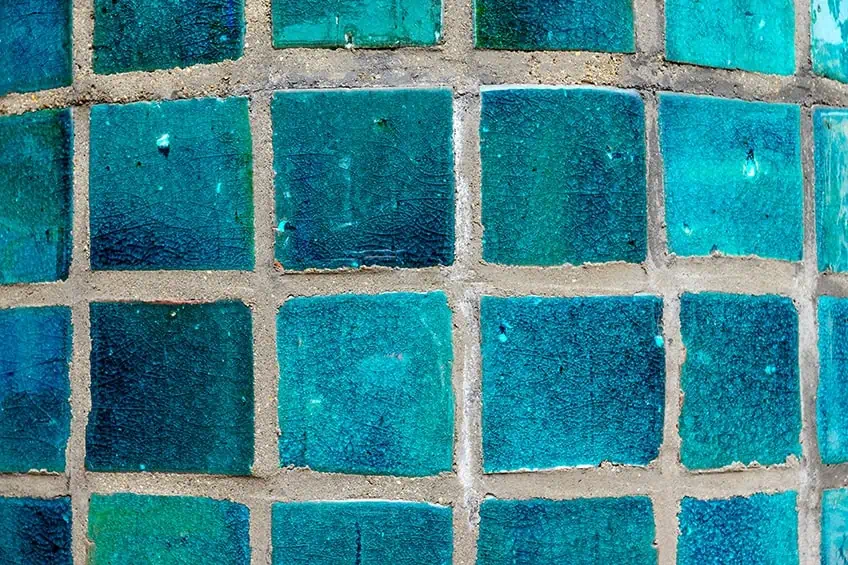
Turquoise
Turquoise can be described as being a bright cyan. A blend of blue and green, it provides the same kind of cool and calm feeling. Turquoise is also sometimes referred to as aquamarine, however, they are different colors. Turquoise is greenish-blue, while aqua is bluer with hints of green and is used quite often in painting ocean scenes.
| Color Name | Shade of Turquoise | Hex Code | RGB % | CMYK % |
| Turquoise | #40e0d0 | 25.1, 87.8, 81.6 | 71, 0, 7, 12 |
Blue-Green
The blue-green version of turquoise is a stronger cyan color and also has a calming and peaceful effect. Blue-green has also been a part of Crayola’s crayon colors for many years. This specific hue can easily be found in nature from fish to lakes. For example, the blue-green damselfish. For a cool and glacier-type palette, try combining blue-green with lighter blues and white. Make the color stand out more when paired with yellows and orange colors.
| Color Name | Shade of Turquoise | Hex Code | RGB % | CMYK % |
| Blue-Green | #0d98ba | 5.1, 59.6, 72.9 | 93, 18, 0, 27 |
Celeste
This is a lighter, pale cyan that has been inspired by the sky, especially on a beautiful summer’s day when no clouds are in sight. The name Celeste is Italian and means heavenly. This specific shade has changed over the years and has developed from having a blue tint to a more minty green color
| Color Name | Shade of Turquoise | Hex Code | RGB % | CMYK % |
| Celeste | #b2ffff | 69.8, 100, 100 | 30, 0, 0, 0 |
Electric Blue
The name “electric blue” was used as an English color name in the mid-1840s and represents a certain energy and excitement. The color is more active and spirited and can be used instead of the more muted blues. The color easily pairs with white, and you can create a striking palette when paired with other vibrant hues, especially a bright orange-red. Of course, it also blends and works great with all other shades of blue.
| Color Name | Shade of Turquoise | Hex Code | RGB % | CMYK % |
| Electric Blue | #7df9ff | 49, 97.6, 100 | 51, 2, 0, 0 |
Turquoise Green
This specific shade of turquoise is a more desaturated cyan-lime green. The color also represents a certain calmness and freshness. The complementary color for this shade is a desaturated pink, while it blends and works well with other desaturated or muted blues and greens.
| Color Name | Shade of Turquoise | Hex Code | RGB % | CMYK % |
| Turquoise Green | #a0d6b4 | 62.7, 83.9, 70.6 | 25, 0, 16, 16 |
Tiffany
The color came about in the mid-1840s when a jeweler known as Charles Lewis Tiffany created a color brand for his jewelry and packaging. The color gained popularity and the color was eventually named Tiffany blue. The color goes well with white for a more elegant look, while corals, yellows, and deep blues add even more color.
| Color Name | Shade of Turquoise | Hex Code | RGB % | CMYK % |
| Tiffany | #0abab5 | 3.9, 72.9, 71 | 95, 0, 3, 27 |
Keppel
Keppel is a saturated dark to moderate cyan and has undertones of gray. The color is calming and represents intelligence as well as creativity. The color is used by many larger businesses as well as airlines and hospitals as it is a color that instills strength, loyalty, and trust. A color that is easily used in ocean scenes and sky vistas.
| Color Name | Shade of Turquoise | Hex Code | RGB % | CMYK % |
| Keppel | #3ab09e | 22.7, 69, 62 | 67, 0, 10, 31 |
Light Sea Green
This is a darker cyan color and is inspired by the ocean and its many colors and has slightly more green than blue. The color will work well and stand out when placed with a desaturated dark red or white and blend well with a muted darker blue and a muted dark cyan-lime green.
| Color Name | Shade of Turquoise | Hex Code | RGB % | CMYK % |
| Light Sea Green | #20b2aa | 12.5, 69.8, 66.7 | 82, 0, 4, 30 |
Teal
The color is associated with feelings of clarity and calmness and as with other blue colors, it is connected to water and nature. To add a significant contrast, pair it with the color maroon, or create a more refreshing feel by combining it with other shades of green.
| Color Name | Shade of Turquoise | Hex Code | RGB % | CMYK % |
| Teal | #008080 | 0, 50.2, 50.2 | 100, 0, 0, 50 |
Catalina
This is a muted darker cyan color and as other blue or green colors, can be associated with calmness, serenity, and thoughtfulness. The color will work well when placed with a muted dark red and also blends well with muted dark greens and blues.
| Color Name | Shade of Turquoise | Hex Code | RGB % | CMYK % |
| Catalina | #72a49f | 44.7, 64.3, 62.4 | 30, 0, 3, 36 |
How to Mix Turquoise
When creating turquoise paint, it can range from muted tones to more intense saturated colors. The easiest way to use turquoise is to simply purchase the color and use it straight from the tube. However, you might be looking for more of a specific shade of turquoise so you will have to mix your own. So, let us get into more detail and learn how to mix turquoise.
Purchasing Paint Colors
You will need to get yourself some green and blue paint, whether it -is oil, acrylic, or watercolors as long as you blend the same medium. However, acrylics might be the easiest medium to start with. You can easily search for paints at your local store or try reading some reviews and buy online. When buying paint, you should know what shade of paint you want. For example, try and choose a blue that has a green bias. To brighten or lighten your turquoise, you should also have some white or yellow paint.
Mixing Turquoise Tones
Some examples of blue colors you can use include cyan, cobalt, ultramarine, or cerulean. The color should have more of a green tint to it than purple. Some of the more common colors used include your viridian green, phthalo green, and phthalo blue. These are popular choices when trying to create a good turquoise color.
You can also choose your yellow colors if you want to create your own green, consider lemon yellow, or light yellow depending on what you are looking for. Avoid blue paint colors that contain a red bias as this will not create a proper turquoise. So, when you do purchase paints, it is a good idea to gain an understanding of pigments and reading labels, rather than just relying on the color name.
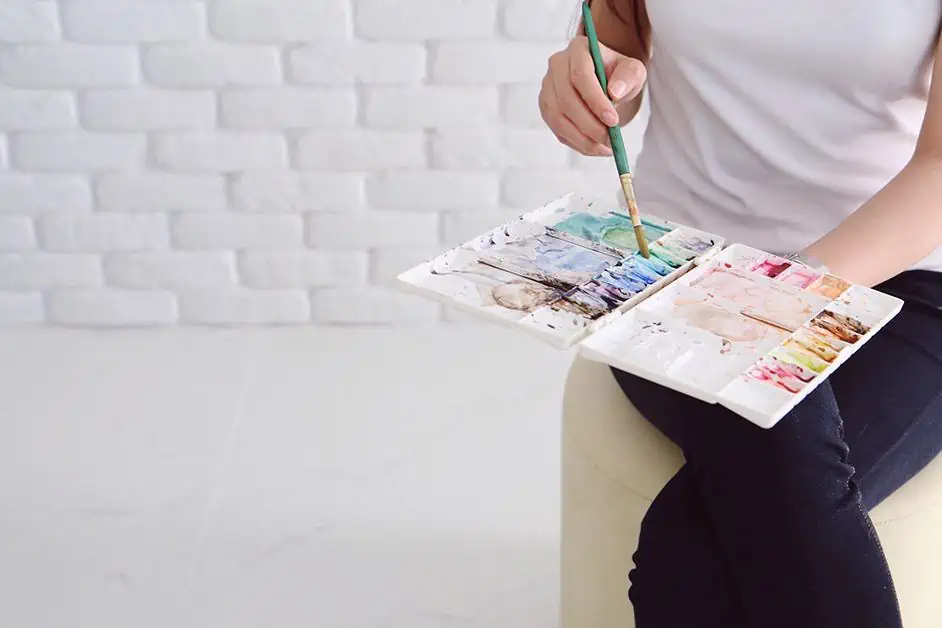
Bright Turquoise
To create a bright turquoise, place some turquoise blue on your palette. A short distance away from this, place some of your green paint on the palette. You can also create your own green by blending equal amounts of blue and yellow. Turquoise has more blue than green in it, so make sure to use twice as much blue as green paint when mixing. This will provide a good base color to work from. You can add a little more or less green paint to alter the color slightly.
Once the paints have been mixed thoroughly, you can make the color brighter by adding a little yellow to the mix. If you add too much yellow, you can add a small amount of white to bring the color down a bit. Make sure you make enough paint for what you want to do because you do not want to add more paint halfway through, which will affect the hue and an uneven look. Before you paint, you can fine-tune the color until you are happy with the color. Remember to add in very small amounts of white or other colors until you reach the shade you want. Also, it is a good idea to take notes about how you made your specific shade of turquoise so you can return in the future and repeat the process.

Pale Turquoise
When blending a pale or lighter color, it is best to start with white on the palette. For a pale turquoise, you can also consider using a very pale blue. When attempting a darker pale turquoise, you can also try using a gray-white. When mixing the colors, place a squirt of white down and then start with small amounts of green and blue paint. You can experiment with the amount of color until you get the shade you want. Once you have reached the shade of turquoise you want, you can then paint with it.
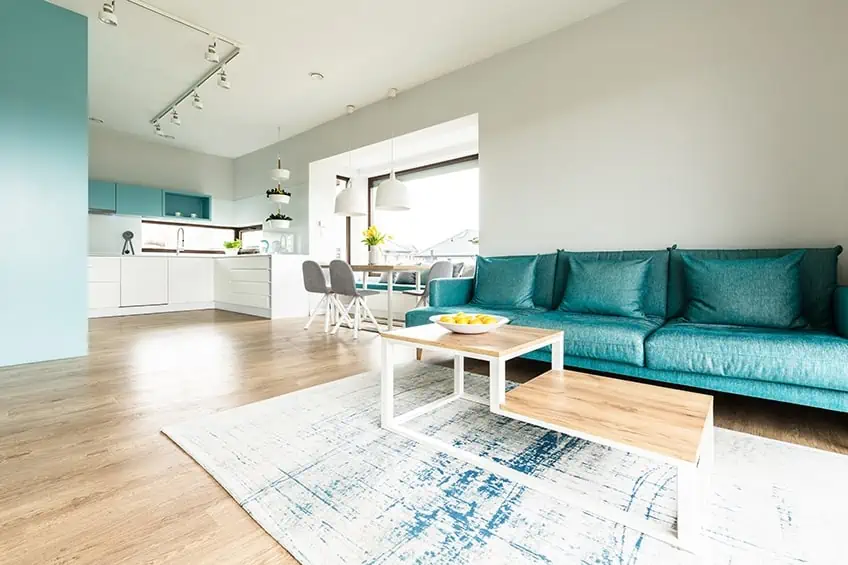
Tips for Creating the Color Turquoise
Learning and understanding what colors make turquoise and creating your own colors can be quite exciting. One of the things to remember is to first have all the correct colors before you begin. Once everything is ready, you can start painting. Below are a few tips to help you achieve the best color turquoise.
- Choose cooler or warmer greens and blues to influence the final temperature and look of your turquoise color
- Consider the color value, do you want a lighter or darker turquoise? You can achieve this by adding white or yellow to the mix for a brighter or lighter look or add black or darker shades of blue to darken your turquoise color
- Adding white will increase the saturation levels and create a muted turquoise
- Want to create an authentic turquoise color, consider looking for real items in nature and study them
- When adding colors to your base color, always use small amounts
- Keep in mind the products you purchase; many manufacturers have their own color formulas, and this could affect the outcome of your color
Frequently Asked Questions
What Two Colors Make Turquoise?
There are many shades of turquoise, but, in general, the color is a combination of blue and green. The color tends to be more green-blue, however, there are many shades, tints, and hues of turquoise. The name comes from the mineral that has been mined and created into beautiful gems.
Is Teal Similar To Turquoise?
These are two separate colors; however, teal can be considered a shade of turquoise. Teal is a deeper and slightly darker shade of turquoise. So, the main difference between these colors is one is a darker shade than the other, and teal leans more towards blue than green.
How to Make Teal?
Making teal is similar to making turquoise, you just have to tweak the amounts of paint added. Combine two parts of blue paint with one part green and add a little yellow. To darken the color, you can add a small amount of a darker shade of blue.
Is Aqua The Same As Turquoise?
Again, these colors might be seen as the same by some, but they are different. Turquoise is more of a green-blue, while aqua is bluer with a little green, and is a little more intense in color. So turquoise leans more towards your green than blue.
How to Make Aqua?
There are quite a few blue-green shades of paint you can purchase at an art store. You can adjust this tube color by adding more blue or white to achieve the color you want. To create your own aqua color, begin with white as your base, and then add in your chosen blue until it produces a light blue when mixed. Then add in very small amounts of yellow until you notice a slight green tint.
What Color Complements Turquoise?
Turquoise goes well with neutral colors, light browns, and darker blues and greens. However, what makes it stand out is its complementary colors like yellow, orange, coral, and deep gold.
Duncan graduated with a diploma in Film and TV production from CityVarsity in 2018, after which he continued pursuing film while taking on a keen interest in writing along the way. Since having graduated, he began working as a freelance videographer, filming a variety of music videos, fashion and short films, adverts, weddings and more. Throughout this, he’s won a number of awards from various film festivals that are both locally and internationally recognized. However, Duncan still enjoys writing articles in between his filming ventures, appreciating the peace and clarity that comes with it.
His articles focus primarily around helping up-and-coming artists explore the basics of certain colors, how these colors can be paired with other shades, as well as what colors are created when you mix one with another. All while relating these shades to historically significant paintings that have incorporated them into their color palette. As a lover of the arts himself, he takes great interest in the Renaissance era of paintings, an era that has directly inspired many of his favorite films.
Learn more about Duncan van der Merwe and about us.



